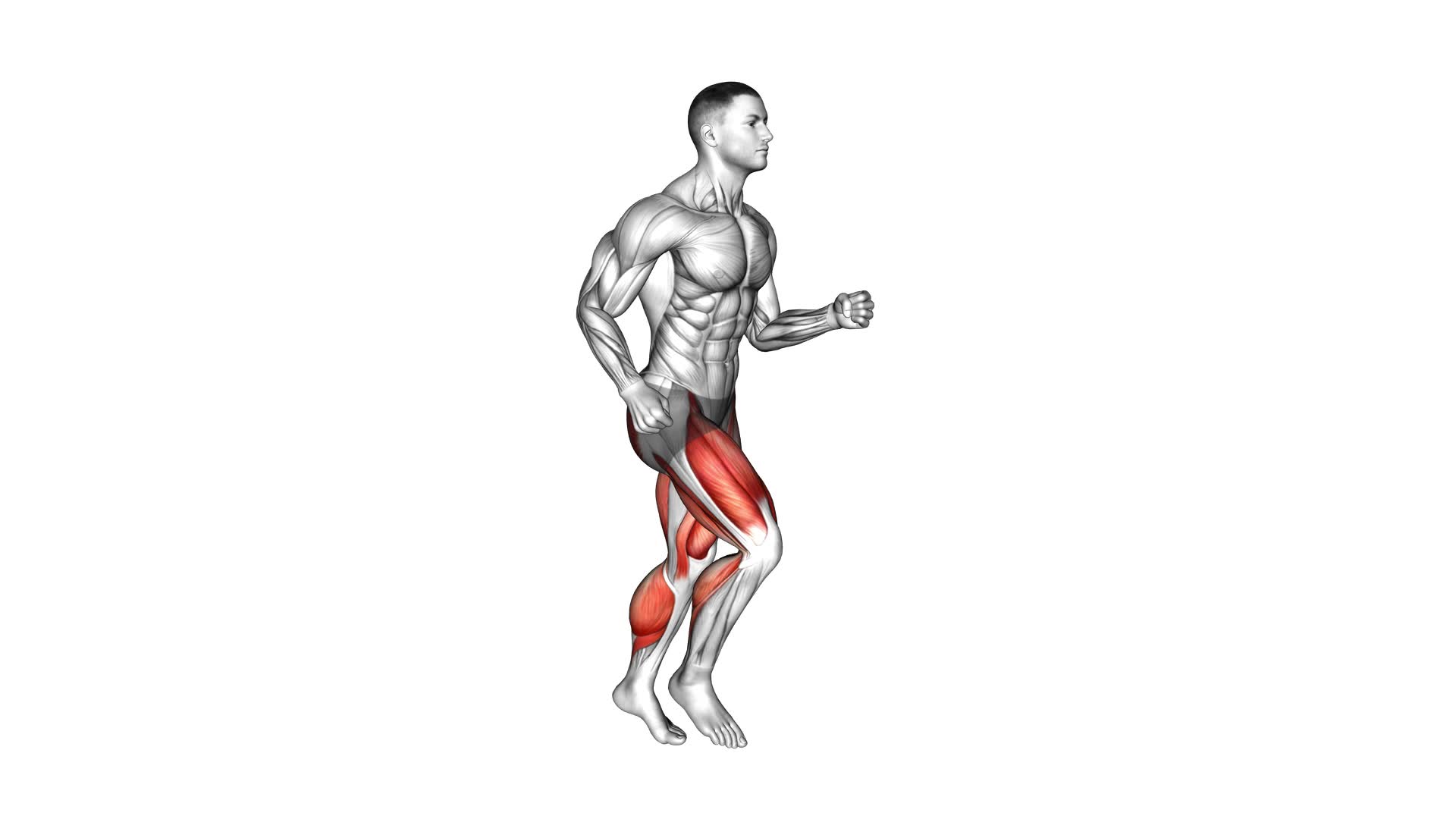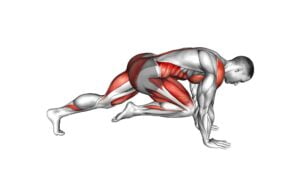Long Distance Running – Video Exercise Guide & Tips

Are you ready to take your long distance running to the next level? Look no further!
Watch This Exercise Video
In this video exercise guide, we'll provide you with essential tips and techniques to help you improve your endurance, strengthen your core, and increase your speed.
Whether you're a beginner or a seasoned runner, our detailed workouts and expert advice will help you reach your running goals.
Get ready to lace up your shoes and hit the pavement with confidence!
Key Takeaways
- Dynamic stretching and warm-up exercises are important for increasing flexibility and range of motion before long distance running.
- Core strengthening exercises are crucial for maintaining proper running form and reducing the risk of injuries.
- Speed training and interval training can improve running performance, speed, and endurance.
- Proper form techniques, such as maintaining an upright posture and engaging core muscles, are essential for efficient and injury-free long distance running.
Warm-Up Exercises
Start your long distance running workout with dynamic warm-up exercises to prepare your muscles and joints for the upcoming challenge. Dynamic stretching is an essential part of your pre-run routine as it helps increase flexibility, improve range of motion, and enhance performance.
To start, begin with a light jog or brisk walk to increase your heart rate and warm up your body. This will get your blood flowing and prepare your muscles for the exercises to come.
Next, incorporate dynamic stretches such as leg swings, arm circles, and walking lunges. Leg swings help to loosen up your hips and increase hip mobility, while arm circles warm up your upper body and shoulders. Walking lunges activate your leg muscles and improve flexibility in your hips and thighs.
Additionally, include exercises like high knees, butt kicks, and skipping to further engage your muscles and increase your heart rate. These movements help to activate and warm up key running muscles, such as your quadriceps, hamstrings, and calf muscles.
Remember to perform each exercise in a controlled manner, focusing on proper form and range of motion. Take your time and listen to your body.
Core Strengthening Exercises
Now let's talk about the importance of core strength when it comes to long distance running.
Your core plays a crucial role in maintaining proper running form and preventing injuries.
By engaging in effective core exercises, you can improve your stability, power, and endurance, allowing you to run stronger and longer.
Importance of Core Strength
To improve your long distance running performance, it's essential to prioritize core strength through a variety of core strengthening exercises.
Core stability plays a crucial role in maintaining proper running form and preventing injuries. When your core is strong, it provides a stable base for your body to move efficiently, reducing the risk of overuse injuries such as shin splints or stress fractures.
Moreover, a strong core helps to improve your overall balance and posture, allowing you to maintain proper alignment throughout your runs. By engaging your core muscles, you can also generate more power and transfer energy effectively, resulting in improved speed and endurance.
Now that you understand the importance of core strength in long distance running, let's dive into some effective core exercises that will help you enhance your performance even further.
Effective Core Exercises
To enhance your long distance running performance and strengthen your core, incorporate these effective core exercises into your training routine:
- Plank Variations: Planks are a great way to engage your core muscles. Try variations like side planks, reverse planks, and plank jacks to challenge your stability and strength.
- Pilates Exercises: Pilates is known for its focus on core strength. Incorporate exercises like the hundred, the teaser, and the single leg stretch to target your deep abdominal muscles.
- Russian Twists: Sit on the ground with your knees bent and feet lifted. Rotate your torso from side to side, touching the ground with your hands. This exercise targets your obliques and improves rotational stability.
- Bicycle Crunches: Lie on your back and bring your knees up. Alternate touching your elbow to the opposite knee, mimicking a bicycle pedaling motion. This exercise engages your entire core and improves coordination.
- Dead Bug: Lie on your back with your arms and legs in the air. Lower one arm and the opposite leg towards the ground, keeping your core engaged. Alternate sides to work your core muscles and improve stability.
Incorporating these core exercises into your training routine won't only improve your long distance running performance but also enhance your overall strength and stability.
Stay consistent and challenge yourself to see the results you desire. Keep pushing forward and remember, a strong core leads to a strong runner.
Speed Training Drills
Are you ready to take your running to the next level?
Speed training drills are a crucial part of improving your overall running performance. By incorporating interval training benefits, such as increased cardiovascular endurance and improved speed, you can push your limits and achieve new personal bests.
Whether you're looking to boost your sprinting abilities or enhance your endurance, speed training drills will help you achieve your goals.
Focus on proper form techniques to maximize your efficiency and prevent injuries, and get ready to see the results of your hard work pay off.
Interval Training Benefits
You can experience numerous benefits by incorporating interval training, which includes speed training drills, into your long distance running routine. Interval training techniques are designed to maximize your running performance and help you reach your goals faster.
Here are some benefits of interval training:
- Increased speed: By incorporating speed training drills into your routine, you can improve your overall running speed.
- Enhanced endurance: Interval training helps to improve your endurance by gradually increasing the intensity of your workouts.
- Efficient calorie burn: Interval training can help you burn more calories in a shorter amount of time compared to steady-state running.
- Improved cardiovascular health: Regular interval training can strengthen your heart and improve your cardiovascular fitness.
- Mental toughness: Interval training challenges your mental strength and resilience, helping you push through physical barriers.
By incorporating interval training into your routine, you can improve your running performance and achieve your goals.
Now, let's explore the differences between sprinting and endurance running.
Sprint Vs. Endurance
As you continue your long distance running journey, let's delve into the comparison between sprinting and endurance running, focusing on the different speed training drills involved.
Sprinting and endurance running are two distinct types of running, each with its own benefits and techniques. While sprinting involves short bursts of intense speed, endurance running is about maintaining a steady pace over long distances.
In terms of speed training drills, sprinting requires explosive power and quickness, focusing on exercises like sprints, interval training, and plyometrics. These drills help improve acceleration, top speed, and overall power output.
On the other hand, endurance running drills focus on building stamina and improving aerobic capacity through exercises such as tempo runs, long runs, and hill repeats. These drills help develop the ability to maintain a steady pace for extended periods of time and improve endurance.
Understanding the differences between these two types of running and incorporating the appropriate speed training drills can greatly enhance your performance in both sprint and long distance races.
Now, let's move on to the next section and discuss proper form techniques.
Proper Form Techniques
To improve your performance in long distance running, it's important to focus on proper form techniques during speed training drills. Paying attention to your form not only enhances your speed and efficiency but also helps in injury prevention. Here are some key tips to keep in mind:
- Maintain an upright posture to optimize your breathing and prevent unnecessary strain on your body.
- Keep your arms relaxed and swinging in a forward-backward motion to propel you forward.
- Land midfoot or forefoot with each stride to reduce the impact on your joints and minimize the risk of injury.
- Engage your core muscles to provide stability and maintain proper alignment.
- Practice controlled and rhythmic breathing techniques to maximize oxygen intake and endurance.
By incorporating these form techniques into your speed training drills, you won't only improve your running performance but also reduce the risk of injuries.
Now let's move on to the next section, where we'll discuss hill training exercises and their benefits.
Hill Training Exercises
Get ready to tackle those hills with these effective hill training exercises.
One of the best ways to improve your running strength and endurance is by incorporating hill sprints into your training routine. Hill sprints involve running up a steep incline at maximum effort for a short distance. This exercise helps to build power in your leg muscles and increase your cardiovascular fitness.
Start by finding a hill with a moderate incline and run up it as fast as you can for about 20-30 seconds. Take a short recovery jog back down the hill and repeat the sprint 6-8 times.
Another great exercise for hill training is hill repeats. This involves running up a longer, less steep hill at a challenging but sustainable pace. Start by finding a hill that takes about 2-3 minutes to climb. Run up the hill at a steady pace, focusing on maintaining good form and breathing rhythmically. Jog back down the hill to recover and repeat the climb 3-4 times.
Incorporating hill sprints and hill repeats into your training routine will help to improve your running speed, endurance, and mental toughness when tackling hills during a race or training run.
Endurance-Building Workouts
Continue building your endurance by incorporating these effective workouts into your training routine. Endurance training is crucial for long-distance running as it allows you to maintain a steady pace and push through fatigue. These workouts will help you improve your endurance and develop the necessary stamina for tackling long distances.
Here are five endurance-building workouts to incorporate into your training routine:
- Long Runs: These are the backbone of endurance training. Gradually increase your mileage each week to challenge your body and build endurance.
- Tempo Runs: These runs involve maintaining a comfortably hard pace for an extended period. They improve your lactate threshold and teach your body to sustain a faster pace for longer.
- Fartlek Training: This involves alternating between periods of fast and slow running. It helps improve your speed, endurance, and mental toughness.
- Interval Training: This involves running at a fast pace for a set distance or time, followed by a recovery period. It improves your anaerobic capacity and helps you maintain a faster pace during long runs.
- Hill Repeats: Running uphill is an excellent way to build strength and endurance. Incorporate hill repeats into your training to challenge your muscles and improve your overall running performance.
Incorporating these workouts into your training routine will help you develop the endurance needed for long-distance running. Remember to listen to your body and gradually increase the intensity and duration of your workouts. Stay consistent, stay motivated, and watch your endurance soar.
Recovery and Injury Prevention Tips
Take proactive steps to support your body's recovery and prevent injuries while long-distance running. Recovery techniques are essential to help your muscles repair and rebuild after intense workouts. One effective technique is to incorporate active recovery into your routine. This involves engaging in low-intensity exercises such as walking or light jogging to increase blood flow and promote healing.
Another helpful strategy is to prioritize rest days. Rest allows your body to recover and reduces the risk of overuse injuries. Additionally, make sure to stretch properly before and after your runs. Stretching helps improve flexibility and prevents muscle tightness and imbalances.
It's also crucial to listen to your body and address any pain or discomfort immediately. Ignoring warning signs can lead to more severe injuries. Cross-training is another valuable tool for injury prevention. By incorporating activities like swimming or cycling into your routine, you can build strength in different muscle groups and reduce the risk of overuse injuries.
Frequently Asked Questions
How Often Should I Do Warm-Up Exercises Before a Long Distance Run?
Before a long distance run, it's crucial to warm up your body to prevent injury and optimize performance.
Warm up exercises offer numerous benefits like increasing blood flow, loosening muscles, and improving flexibility.
By incorporating a warm up routine into your running regimen, you'll enhance your endurance and reduce the risk of strains or cramps.
Are There Any Specific Core Strengthening Exercises That Are Beneficial for Long Distance Runners?
To improve your core stability and enhance your endurance training as a long distance runner, there are specific exercises that can be highly beneficial.
Engaging in exercises such as planks, Russian twists, and bicycle crunches can help strengthen your core muscles, allowing for better balance and posture during your runs.
What Are Some Effective Speed Training Drills for Improving Running Pace?
To improve your running pace, you'll want to incorporate interval training and fartlek training into your routine.
Interval training involves alternating between high-intensity bursts of speed and periods of rest or lower intensity.
Fartlek training, on the other hand, involves varying your speed and intensity throughout your run.
These drills will help increase your overall speed and endurance, allowing you to reach your running goals faster.
How Can Hill Training Exercises Help Improve Long Distance Running Performance?
Hill sprints and interval training exercises can greatly improve your long distance running performance. By incorporating these workouts into your training routine, you'll strengthen your leg muscles, increase your lung capacity, and build endurance.
Hill sprints help to build power and speed, while interval training improves your cardiovascular fitness. Both of these training methods will challenge your body and push you to new limits, ultimately helping you become a stronger and faster long distance runner.
Are There Any Specific Recovery and Injury Prevention Tips That Are Particularly Important for Long Distance Runners?
To excel as a long distance runner, it's crucial to prioritize recovery methods and injury prevention techniques.
Your body goes through a lot during those miles, so proper rest and care are essential.
Implement strategies like foam rolling, stretching, and ice baths to aid in muscle recovery.
Strengthening exercises and cross-training can help prevent injuries.
Conclusion
In conclusion, long distance running is a challenging yet rewarding activity that requires proper warm-up exercises, core strengthening exercises, speed training drills, hill training exercises, and endurance-building workouts.
By following these tips and incorporating them into your training routine, you can improve your performance, prevent injuries, and enhance your overall running experience.
Remember, consistency and dedication are key to achieving your long distance running goals. So lace up your shoes, push yourself, and enjoy the journey towards becoming a stronger and more resilient runner.

Author
Years ago, the spark of my life’s passion ignited in my mind the moment I stepped into the local gym for the first time. The inaugural bead of perspiration, the initial endeavor, the very first surge of endorphins, and a sense of pride that washed over me post-workout marked the beginning of my deep-seated interest in strength sports, fitness, and sports nutrition. This very curiosity blossomed rapidly into a profound fascination, propelling me to earn a Master’s degree in Physical Education from the Academy of Physical Education in Krakow, followed by a Sports Manager diploma from the Jagiellonian University. My journey of growth led me to gain more specialized qualifications, such as being a certified personal trainer with a focus on sports dietetics, a lifeguard, and an instructor for wellness and corrective gymnastics. Theoretical knowledge paired seamlessly with practical experience, reinforcing my belief that the transformation of individuals under my guidance was also a reflection of my personal growth. This belief holds true even today. Each day, I strive to push the boundaries and explore new realms. These realms gently elevate me to greater heights. The unique combination of passion for my field and the continuous quest for growth fuels my drive to break new ground.







